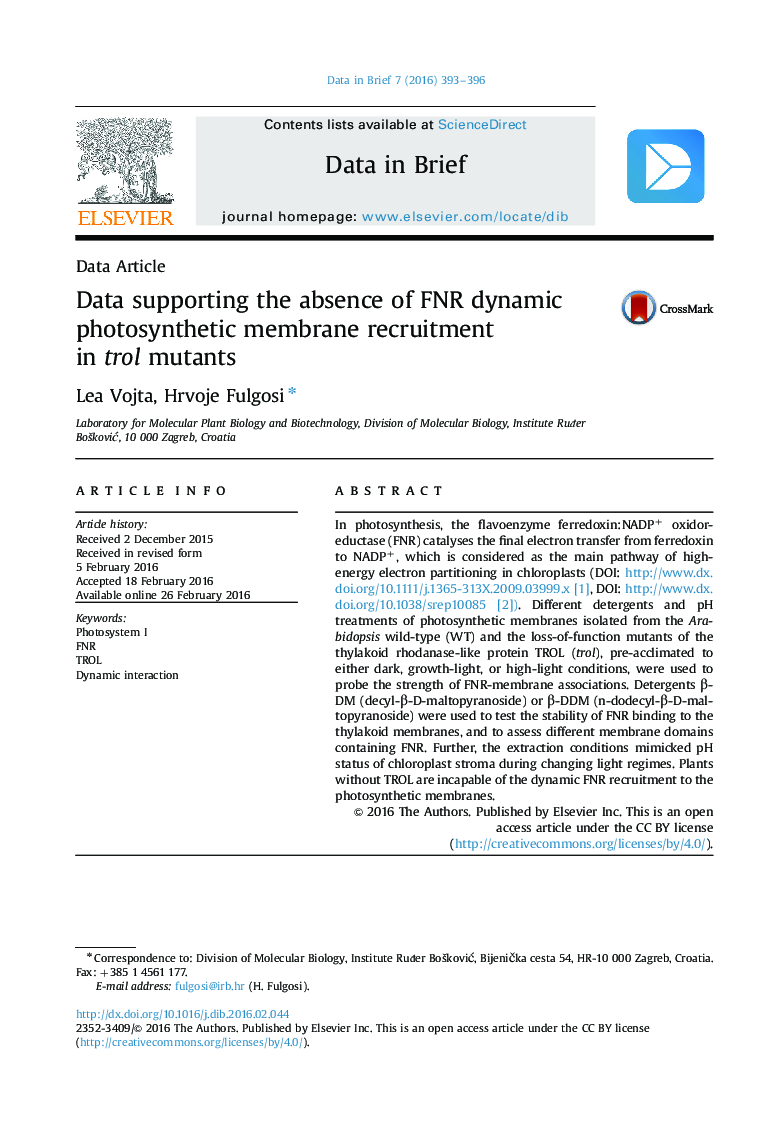| کد مقاله | کد نشریه | سال انتشار | مقاله انگلیسی | نسخه تمام متن |
|---|---|---|---|---|
| 174787 | 458899 | 2016 | 4 صفحه PDF | دانلود رایگان |
In photosynthesis, the flavoenzyme ferredoxin:NADP+ oxidoreductase (FNR) catalyses the final electron transfer from ferredoxin to NADP+, which is considered as the main pathway of high-energy electron partitioning in chloroplasts (DOI: 10.1111/j.1365-313X.2009.03999.x[1], DOI: 10.1038/srep10085[2]). Different detergents and pH treatments of photosynthetic membranes isolated from the Arabidopsis wild-type (WT) and the loss-of-function mutants of the thylakoid rhodanase-like protein TROL (trol), pre-acclimated to either dark, growth-light, or high-light conditions, were used to probe the strength of FNR-membrane associations. Detergents β-DM (decyl-β-D-maltopyranoside) or β-DDM (n-dodecyl-β-D-maltopyranoside) were used to test the stability of FNR binding to the thylakoid membranes, and to assess different membrane domains containing FNR. Further, the extraction conditions mimicked pH status of chloroplast stroma during changing light regimes. Plants without TROL are incapable of the dynamic FNR recruitment to the photosynthetic membranes.
Journal: Data in Brief - Volume 7, June 2016, Pages 393–396
